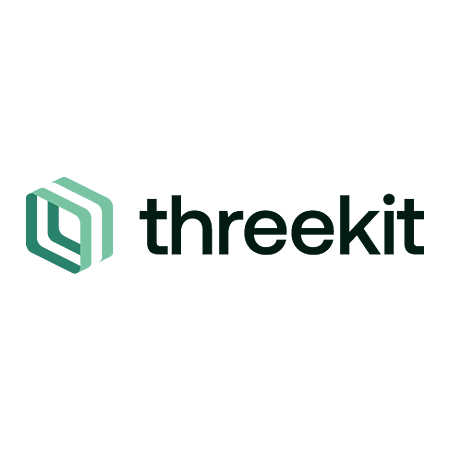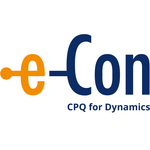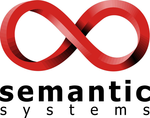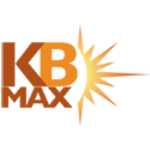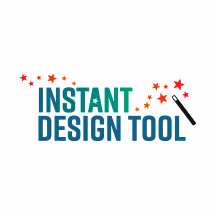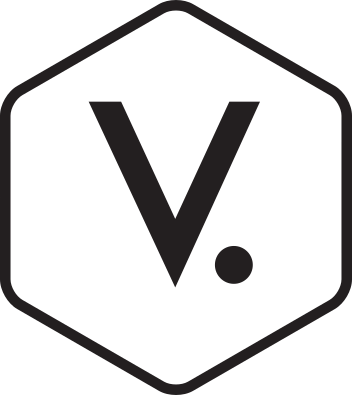What Is Product Configurator Software?
Product configurator software is a sophisticated tool that enables organizations to build, customize, and visualize their goods through an easy-to-use interface. It allows customers to customize and build their preferred products by selecting various features, options, and requirements. Companies can use product configurator software to optimize their sales processes and increase client satisfaction by offering a unique and personalized purchasing experience.
This program can be used for a wide range of products, from simple customisable items like t-shirts to big ones like cars or machines. One of the primary advantages of product configurator software is its ability to create precise quotations and pricing for unique products. This eliminates the need for manual computations, lowering the risk of error and ultimately saving time and resources.
Furthermore, product configurator software allows firms to provide their consumers with a diverse selection of options and combinations, enhancing the opportunity for cross-selling and upselling. This not only increases money, but also enhances the whole consumer experience. Furthermore, product configurator software frequently interacts with other company systems like as CRM and ERP, allowing for more efficient order processing and inventory management.
Finally, this leads to increased corporate efficiency and productivity. When choosing product configurator software, look for features like an intuitive interface, extensive customization choices, connectivity with other systems, and great customer service. Investing in the correct product configurator software can provide numerous benefits to your company, including greater sales, improved customer satisfaction, and simpler operations.
What Are The Recent Trends In Product Configurator Software?
Product configurator software has grown in popularity in recent years, as more firms recognize the value of customizing and personalizing their products. With the emergence of e-commerce and the demand for unique, bespoke products, the market for product configurator software has expanded rapidly.
let's explore, we'll go over the latest trends in product configurator software that you should be aware of before making a purchase.
1. Integration With E-Commerce Platforms: One of the most significant trends in product configurator software is connectivity with e-commerce platforms. This enables firms to simply display their customisable products on their websites, allowing customers to design and purchase their products in one location. Businesses can use integrated product configurators to improve the ordering process while increasing sales and customer satisfaction.
2. Use Augmented Reality (AR): Another trend in product configurator software is the use of augmented reality (AR) technology. Customers may now visualize their customized products in 3D in real time. Customers can use AR technology to get an exact image of how their goods will look and make any modifications before making their purchase. This improves the customer's purchasing experience while decreasing the likelihood of returns owing to a disparity between the product on the website and the real thing.
3. Modular And Scalable Solutions: Product configurator software is becoming more modular and scalable, enabling organizations to add and remove features as needed. This not only reduces the cost of the software, but also allows firms to tailor it to meet their specific needs. With the rise in demand for customization, businesses require flexible solutions that can adapt to changing needs, and product configurator software's modular and scalable approach gives exactly that.
4. Mobile Compatibility: In today's digital age, users are increasingly browsing and shopping online using mobile devices. To keep up with changing client behaviors, product configurator software is being made to be mobile-friendly. Customers may now design and purchase their bespoke products on the fly, increasing the software's overall convenience and accessibility.
5. Data Analysis And Personalization: Product configurator software now includes data analytics elements that give firms important information into their consumers' preferences and purchasing behavior. This information can be utilized to personalize the user experience and offer targeted items and incentives, resulting in improved customer satisfaction and sales.
Benefits Of Using Product Configurator Software
Product configurator software is a sophisticated and adaptable tool that helps firms develop customisable items for their customers. This breakthrough software has transformed the way things are created, made, and sold, bringing several advantages to organizations of all kinds.
Let's explore, we'll look at the different advantages of utilizing product configurator software and why it's an essential tool for any business trying to improve its product offers and customer experience.
1. Streamlined Product Customisation Process: One of the most significant advantages of product configurator software is its ability to simplify the product customization process. Customizing things via traditional methods can be time-consuming and labor-intensive. Customers can, however, use a configurator to readily select the features and extras they want from a virtual catalog, removing the need for human customization. This not only saves time, but also decreases the possibility of errors, guaranteeing that clients get the exact product they want.
2. Increased Customer Satisfaction: Configurator software improves the overall customer experience by allowing them to personalize their items. Customers feel more linked to the things they buy, which increases their likelihood of being happy. This leads to improved client loyalty and repeat business, which results in higher income for the company.
3. Increased Sales And Revenue Generation: Product configurator software has been shown to boost sales and revenue for organizations. Businesses that offer bespoke products can reach a wider spectrum of clients, including individuals with special requirements and preferences. Furthermore, a configurator enables firms to upsell and cross-sell products because buyers are more inclined to add additional features or accessories to their customized product.
4. Reduced Production Costs: Manually configuring products can be costly in terms of labor, resources, and time. A configurator automates the entire customisation process, decreasing the need for manual labor and saving on production expenses. This not only improves productivity, but it also enables enterprises to offer customized products at an affordable price, increasing market competitiveness.
5. Enhanced Product Visualization: Product configurator software uses strong 3D rendering and visualization capabilities to show consumers their customized product in real time. This not only helps customers grasp how the finished product will look, but it also offers them a sense of ownership, which increases their overall contentment with the purchase.
6. Improved Product Data Management: Product configurator software includes powerful data management capabilities, allowing organizations to effortlessly manage the large amounts of data required in product modification. This includes storing and categorizing consumer preferences, maintaining product variations, and tracking orders. This efficient data management allows firms to save time and resources while maintaining product correctness and consistency.
Important Factors To Consider While Purchasing Product Configurator Software?
When choosing product configurator software, there are several crucial variables to consider. These elements will influence not only the software's effectiveness, but also its capacity to suit your specific company requirements.
Here are the major factors to consider while selecting product configurator software:
1. Flexibility And Customization Options: One of the primary reasons for investing in product configurator software is the ability to customize products to meet the specific needs of your clients. As a result, it is critical to choose software that provides flexibility and customization possibilities. Make sure the program can handle a variety of product kinds, options, and modifications.
2. Ease Of Use And User Interface: Both you and your customers should find the product configurator software intuitive. To guarantee that the configuration process runs smoothly and quickly, the user interface should be intuitive and user-friendly. It should also include a 3D depiction of the product to provide clients with a realistic image of their personalized product.
3. Integration With Your Existing Systems: Before acquiring product configurator software, ensure that it is compatible and can interact easily with your existing systems, such as eCommerce platforms, CRM software, and ERP systems. This will guarantee that data flows smoothly between systems and avoids duplication.
4. Pricing And ROI: The cost of product configurator software, like any other business expenditure, should be carefully considered. Look for software with a high return on investment (ROI) and a reasonable price depending on the features and functionalities it provides. It is also critical to consider any additional expenses, such as training, maintenance, and support.
5. Mobile Compatibility: With the advent of mobile shopping, it is critical to select product configurator software that works with mobile devices. Customers will be able to configure and order things while on the road, making for a more convenient shopping experience.
6. Customer Support And Training: It is critical to choose a software vendor who provides consistent customer support and training for the product configurator software. This ensures that any faults or questions are promptly addressed, and that your team has the essential abilities to operate the software properly.
7. Scalability: As your company expands, you may need to expand your product offerings and accommodate a larger consumer base. As a result, it is critical to select product configurator software that is adaptable and capable of meeting your future business requirements without restriction.
By taking these elements into account, you will be able to select the best product configurator software for your business needs while also providing a seamless and personalized customer experience. To ensure a successful installation of product configurator software, carefully consider your options and select a credible software provider.
What Are The Key Features To Look for In Product Configurator Software?
Product configurator software is a vital tool for firms who want to optimize their product modification process and increase customer satisfaction. With so many options available on the market, it might be difficult to sort through the features and choose the proper program.
To help you make an informed decision, here are some crucial characteristics to look for in product configurator software.
1. Intuitive User Interface: One of the most important elements to consider while selecting product configurator software is the user interface. The software should be simple to navigate and operate, with an intuitive design that requires no training. This ensures that your employees can use the program properly and provide your consumers with a seamless purchasing experience.
2. Customization Options: The major goal of product configurator software is to allow clients to personalize their items to their specifications. As a result, it is critical to select software that provides a variety of customization options such as color, size, design, and materials. The more options accessible, the more customizable the products may be, resulting in higher client satisfaction.
3. Real-Time Visualizations: A visual depiction of the personalized product is essential for clients to make an informed purchasing decision. Look for software that provides real-time visualizations and 3D rendering, so clients can see how their product will appear in real time. This functionality not only improves the shopping experience, but also lowers the likelihood of consumer discontent.
4. Integration With E-Commerce Platforms: In today's digital world, businesses must have an online presence to attract customers. When selecting product configurator software, ensure that it is compatible with popular e-commerce platforms like as Shopify, Magento, and WooCommerce. This will make it easier to manage orders, inventory, and product data, simplifying your entire business operations.
5. Scalability: As your firm expands, so will the need for your products. Your product configurator software should be able to handle a high volume of orders while maintaining speed and performance. Look for software that is expandable and adaptable to your company's changing requirements.
6. Compatibility: Another important factor to consider is compatibility with different devices and browsers. The program should be available on both desktop and mobile platforms, and it should work with common browsers such as Google Chrome, Mozilla Firefox, and Safari. This will ensure that clients have a consistent experience regardless of which device they use to view your website.
7. Customer Support: Regardless of how easy the program is to use, you or your customers may require support at some point. Look for software that provides solid customer assistance, whether by phone, email, or live chat. This ensures that any difficulties or complaints are addressed as soon as possible, avoiding delays in the purchasing process.
Why Do Businesses Need Product Configurator Software?
Businesses use product configurator software because it enables them to offer personalized products and services for their clients. Customers increasingly want individualized experiences and goods that address their specific demands. This program enables firms to quickly create and design goods that meet their consumers' needs, resulting in enhanced customer happiness and loyalty.
Another reason firms use product configurator software is that it simplifies the sales process. This program allows firms to rapidly and accurately generate quotes and pricing for bespoke items, removing the need for manual computations and lowering the chance of errors. This saves time while also increasing the sales team's efficiency and effectiveness.
Furthermore, product configurator software enables organizations to remain competitive in a continually changing marketplace. Businesses that can offer individualized and unique items can set themselves apart from their competitors and attract more clients. This software also enables organizations to stay current with industry trends and respond to changing customer requests, giving them a competitive advantage.
Furthermore, product configurator software enhances the overall production process for organizations. By automating the design and configuration processes, it decreases the possibility of rework and errors, resulting in a more efficient and cost-effective manufacturing process. This software also enables firms to effortlessly track and manage orders, assuring on-time delivery and client satisfaction.
Finally, product configurator software helps firms gain useful insights and data. Businesses may make more informed judgments and improve their product offerings by researching client preferences, habits, and sales data. This program also assists firms in identifying possible upselling and cross-selling opportunities, resulting in increased revenue.
How Much Time Is Required To Implement Product Configurator Software?
When considering deploying product configurator software, one of the most prevalent worries is how long it will take to completely integrate the software into the organization. The actual time required for implementation varies based on a number of factors, including the product's complexity, the size of the company, and the level of customization necessary. However, there are certain broad recommendations that might help buyers understand the timescale they can expect.
The initial stage in installing product configurator software is usually the setup and installation process. This typically entails collaborating with the software provider to ensure that the system is correctly configured and customized to fit the specific demands of the organization. Depending on the extent of personalization necessary, this procedure might take anything from a few days to several weeks.
The next step is data transfer, which involves migrating any current product information and data into the new platform. This may include product specifications, pricing information, and other relevant information. The length of this process will be determined by the amount of data that needs to be migrated and the organization's present data management systems.
The next step after installing the software and transferring the data is to test and train. This is critical to ensuring that the software functions properly and that all staff understand how to use it. The length of this process varies according to the software's complexity and the number of personnel that will use it.
The usual schedule for establishing product configurator software is four to six weeks. However, this can vary substantially based on the criteria listed above. Buyers should extensively discuss their individual requirements and schedule expectations with the software provider in order to obtain a more accurate estimate of implementation time.
What Is The Level Of Customization Available In Product Configurator Software?
Product Configurator Software provides for extensive customization to fit the specific needs of each organization. The extent of customization possible is determined by the individual program chosen, as different solutions provide varied degrees of flexibility. At its essence, product configurator software allows customers to create and personalize products to their precise specifications. This can include choices for size, color, materials, features, and more.
Many software systems additionally include the integration of dynamic pricing, automated rules, and advanced logic to help clients navigate the configuration process and ensure the end product is viable and cost-effective. In addition to these basic customization possibilities, some product configurator software includes additional features like 3D visualization, real-time price and inventory updates, and the ability to save and return to configurations at a later time.
These features can dramatically improve the customer experience and simplify the ordering process for businesses. Furthermore, some software solutions allow you to generate bespoke or industry-specific templates, resulting in a more personalized and efficient configuration experience. This is especially handy for firms that sell a variety of products with similar customization possibilities.
It's crucial to remember that the level of customisation offered by product configurator software benefits both customers and businesses. Businesses that use a fully configurable solution may easily adjust to changing market demands, offer a broader range of products and options, and stay ahead of the competition. Overall, product configurator software provides a wide range of customization options.
Businesses can select a solution that meets their specific requirements and provides the level of flexibility necessary for their products and consumers. When comparing software solutions, it's critical to assess the level of flexibility and capabilities to find the greatest fit for your company.
Which Industries Can Benefit The Most From Product Configurator Software?
Product configurator software is a powerful tool that enables businesses to provide customized products and services to their customers. While this type of software can aid a variety of sectors, some will profit far more than others.
Let's explore, we'll look specifically at which sectors can profit the most from product configurator software.
1. Manufacturing Industry: Product configurator software has significant potential benefits for the manufacturing industry. This type of software may expedite and automate the entire product modification process, from design to manufacturing. With this software, manufacturers can simply build customized items depending on their clients' specific needs, giving them a competitive advantage in the market.
2. Automotive Business: The automotive business is another area that can greatly benefit from product configurator software. With so many different automobile models and options available, clients may find it difficult to choose the appropriate one. Product configurator software can make this process easier by allowing buyers to select their preferred car options and see how they effect the final pricing. This makes the car-buying process more interactive and individualized for the consumer.
3. Furniture Industry: Furniture companies can use product configurator software to increase sales and deliver a better shopping experience to their customers. Customers can use this software to imagine their furniture in several colors, materials, and styles, giving them a clear concept of how the finished product would look. This removes guesswork and reduces the likelihood of unhappiness, resulting in increased customer satisfaction and repeat business for furniture companies.
4. Clothes And Fashion Industry: Product configurator software might be useful in the clothes and fashion industries. Customers can use this software to create their own outfits, including fabric, colors, and sizes, resulting in a genuinely unique piece of clothing. This level of customisation not only improves the consumer experience, but also differentiates organizations in the highly competitive fashion market.
5. Technology Business: In the quickly expanding technology business, firms must stay current on the latest trends and offers in order to be competitive. Product configurator software can assist technology companies do this by allowing clients to customize their preferred tech items with various features and specs. This can also help firms collect vital data about customer preferences, which can then be used to build future products.
Conclusion
To summarize, investing in product configurator software can significantly benefit your organization by expediting the product modification process and increasing overall efficiency. As you learned from our detailed buyer's guide, there are various important things to consider when selecting the best software for your individual requirements. First, identify your budget and the characteristics that are critical to your organization.
This will help you limit down your alternatives and guarantee you receive the best value for your money. Furthermore, assess the software's amount of flexibility and scalability to guarantee it can meet your company's changing needs. Next, extensively study the vendor's reputation and client feedback to verify you're working with a trustworthy and respected organization.
It is also critical to assess the quality of customer assistance and training available to ensure a seamless and effective software adoption. Furthermore, take advantage of free trials and demos to gain firsthand experience with the program and determine whether it matches your company's specific needs. This also allows you to evaluate the software's usability and customization capabilities.
Finally, remain up to date on the newest trends and improvements in product configurator software to ensure you're making a long-term investment for your company. With the proper product configurator software, you can take your product offering to the next level while improving the overall consumer experience.




